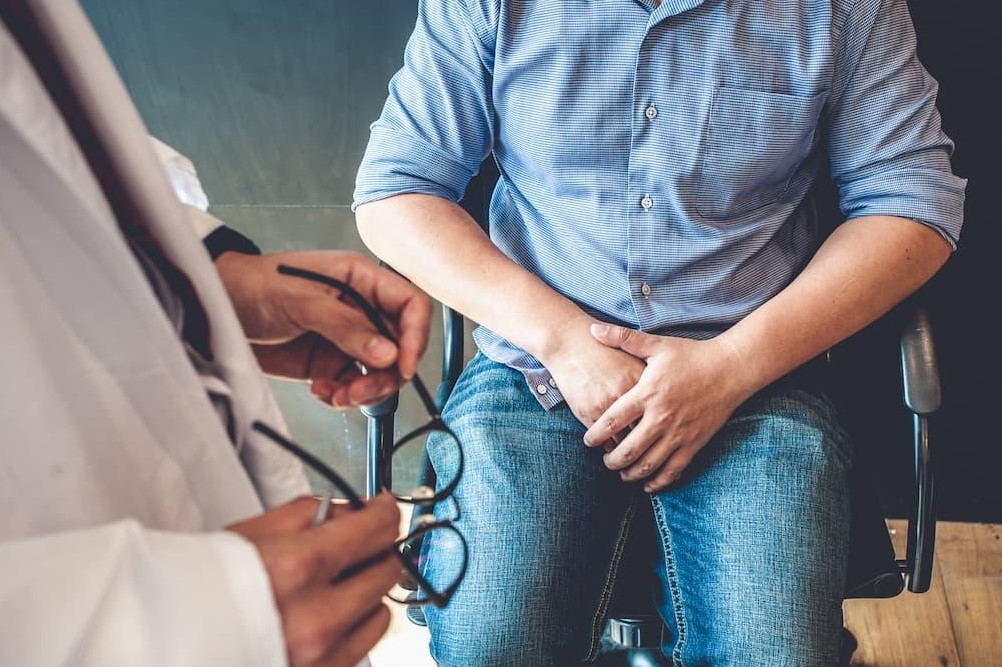
Anal warts (condyloma): how to recognise and eliminate them
Anal warts, also called condylomata acuminata, venereal warts or cockscombs, are irregularly shaped growths that affect the area around the anus and can affect both women and men
Causes of anal warts
Anal condylomata are caused by infection with HPV (Human Papillomavirus), a virus that is nowadays more widespread than people think and is mainly transmitted sexually.
There are 120 species of Papillomavirus, divided into 16 groups.
Only nine, however, have a higher risk of leading to the development of neoplasms (strain 6-11-16-18-31-33-45-52-58).
In most cases, therefore, the virus causes infections that are not serious and may even regress spontaneously.
In other cases, however, it can cause the development of lesions, namely anal condylomata, which if left untreated can degenerate into cancerous forms.
It is estimated that about 70% of the population comes into contact with HPV at least once in their lifetime.
Of these, fortunately, only a small proportion develop the disease.
In fact, the risk of becoming infected after a single complete act of intercourse with an HPV-positive person is about 4%.
Many months or even years may pass between contact with the virus and the manifestation of the infection,’ the specialist continues.
How to recognise anal warts
Anal condylomata vary in shape, colour and size:
- small pinkish-brown growths, single or multiple;
- larger or smaller pinkish-white masses;
- fungiform or cauliflower-shaped lesions.
Their location may also vary and affect various parts of the body, both male and female.
Normally they develop in the perianal area, but they can also spread as far as the anal canal reaching the rectal mucosa.
Other areas that can be affected by these lesions are:
- the glans, the urethra, the scrotum in men;
- the vulva and vaginal cervix in women;
- the mouth and larynx in both.
Symptoms of anal warts
Usually asymptomatic, anal condylomas, over time, can cause itching and burning, anal or perianal, and become palpable during personal hygiene.
Anal condyloma, the diagnosis
In the case of symptoms such as those mentioned above, or if one has had unprotected intercourse with someone who has the infection, it is essential to undergo a specialist proctological examination in order to assess the problem and define the most appropriate treatment.
In association with the proctology examination, it may also be useful to perform an anoscopy, an examination that makes it possible to observe the last part of the anal canal and look for lesions that otherwise could not be identified.
Diagnosing them at an early stage is very important because, if left untreated for a long time, they can develop into tumours of the anus, a disease whose incidence is estimated to have quadrupled in the last 20 years and which in 85% of cases is associated with HPV infection.
Histological examination is also recommended to confirm the clinical suspicion of condyloma.
Treatment
Anal condylomas can be treated in different ways depending on their location, number and size:
- medical therapy: consists of applying specific creams locally for a few weeks. This treatment has a success rate of around 60%. However, it can cause redness and burning, especially in the more delicate sites such as the glans and vagina. The recurrence rate varies between 6.5% and 55%;
- interferon therapy: this is indicated in immunodepressed persons;
- surgical removal by laser, electrosurgical scalpel or surgical scalpel: depending on the site and number of lesions, it may be outpatient, under local anaesthesia, or require admission to day surgery, with spinal anaesthesia, in the case of more extensive disease. Surgical treatment is not curative, but serves to keep the disease ‘under control’. For this, the patient and partner must follow a follow-up programme with anoscopy twice a year.
Prevention of HPV infection
To prevent HPV infection and thus the risk of developing anal condylomas, it is highly recommended to use condoms for all intercourse: vaginal, anal, and even oral.
It does not guarantee 100% protection, but it also helps prevent other sexually transmitted diseases (Chlamydia, Gonorrhoea, HIV, Syphilis, etc.).
Prevention is also done through early diagnosis, which involves performing, in the presence of risk factors, of:
- anal pap test;
- high-resolution anoscopy;
- HPV test.
The European guidelines, in particular, recommend, for women, regular check-ups by gynaecological examination and Pap test.
The extra weapon: vaccination
For some years now, a vaccine has been available against HPV, which is also responsible for cervical cancer in women.
It is a safe vaccine, directed against all 9 strains with the greatest oncogenic power (strain 6-11-16-18-31-33-45-52-58).
Vaccination is also advisable for those who have already had exposure to the papilloma virus, as it protects against strains to which the person may not have been exposed.
Read Also:
Emergency Live Even More…Live: Download The New Free App Of Your Newspaper For IOS And Android
Condylomas: What They Are And How To Treat Them
Papilloma Virus Infection And Prevention
What Is The Papilloma Virus And How Can It Be Treated?
Pap Test, Or Pap Smear: What It Is And When To Do It
Rocketing Vaccine Cost Warning
The Vaccine Against HPV Lowers The Risk Of Relapse In Positive Women
HPV Vaccine: Why Vaccinating Against The Papilloma Virus Is Important For Both Sexes
HPV Infection And Cancers Of The Nose, Mouth And Throat: What Is There To Know?


